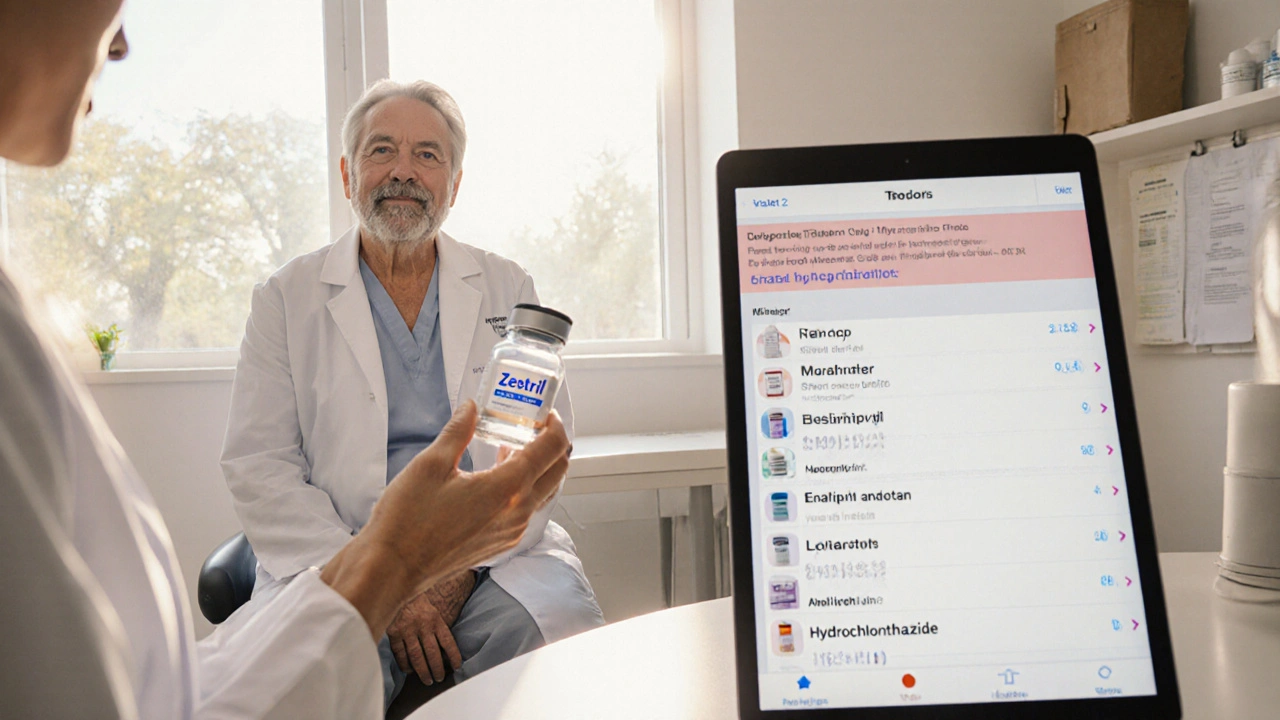ACE Inhibitors – What They Are and Why They Matter
When talking about ACE inhibitors, drugs that block the angiotensin‑converting enzyme to reduce blood pressure and protect the heart. Also known as angiotensin converting enzyme blockers, they are a cornerstone of modern cardiovascular care.
One of the most widely used examples is Ramipril, a once‑daily pill that belongs to the ACE inhibitor class. It’s prescribed for high blood pressure, heart failure, and after a heart attack. If you’ve ever wondered why doctors reach for ramipril, the answer lies in its ability to lower Hypertension, a chronic condition where the force of blood against artery walls is too high. By calming the pressure, ACE inhibitors help prevent strokes, kidney damage, and other complications.
How ACE Inhibitors Work: The RAS Connection
The body’s renin‑angiotensin system (RAS) is like a thermostat for blood pressure. It starts with the liver releasing angiotensinogen, which renin chops into angiotensin I. Then the angiotensin‑converting enzyme turns angiotensin I into Angiotensin II, a potent vasoconstrictor that narrows blood vessels and raises blood pressure. ACE inhibitors step in and block that final transformation, so the vessels stay relaxed and blood flows more easily. The result is lower systolic and diastolic numbers, less strain on the heart, and better kidney perfusion.
This simple biochemical block creates a cascade of benefits. First, it reduces the workload on the heart, which is why patients with heart failure see improved exercise tolerance. Second, it slows the progression of diabetic nephropathy by decreasing intraglomerular pressure. Third, it enhances the effect of other antihypertensives, allowing lower doses and fewer side effects overall.
But the story isn’t just about the big picture; it’s also about the everyday details. Most ACE inhibitors, including ramipril, are taken once a day, usually in the morning. Starting doses are low—often 2.5 mg for ramipril—to gauge tolerance. Doctors may double the dose every few weeks until the target blood pressure is reached, typically below 130/80 mm Hg for most patients.
Side effects are generally mild, but they’re worth knowing. A persistent dry cough is the classic flag, caused by increased bradykinin levels when ACE is blocked. If the cough becomes bothersome, switching to an angiotensin II receptor blocker (ARB) can help. Less common issues include elevated potassium, low blood pressure (especially after the first dose), and rare kidney function changes. Regular lab checks—blood pressure, serum creatinine, and potassium—keep you on track.
A common question is whether ACE inhibitors are safe for everyone. The answer is nuanced. Pregnant women should avoid them because they can harm the developing fetus. People with a history of angio‑edema (swelling of the face, lips, or throat) should also steer clear, as the medication can trigger a repeat episode. For most others, the benefits far outweigh the risks.
Beyond ramipril, the class includes lisinopril, enalapril, captopril, and benazepril. Each has a slightly different dosing schedule and duration of action, but the core mechanism stays the same. If you’re trying to remember them, think of the “-pril” suffix—that’s the trademark of ACE inhibitors.
When you combine an ACE inhibitor with lifestyle changes—low‑salt diet, regular exercise, weight management—you’ll see the biggest drops in blood pressure. Even a modest 5 mm Hg reduction can shave years off your risk of heart attack or stroke. So the medication isn’t a magic bullet; it’s part of a broader heart‑healthy plan.
In practice, clinicians use ACE inhibitors for several key conditions:
- Hypertension: First‑line therapy for most adults.
- Heart failure: Improves survival and reduces hospitalizations.
- Post‑myocardial infarction: Limits remodeling of heart tissue.
- Diabetic kidney disease: Slows decline in kidney function.
Choosing the right ACE inhibitor often comes down to convenience and cost. Ramipril’s once‑daily dosing makes it a popular pick for busy patients. Lisinopril’s long half‑life offers flexibility for those who forget doses. Captopril, with its short half‑life, is useful when rapid blood pressure control is needed in a hospital setting.
Finally, remember that medication adherence is critical. Skipping doses can cause rebound hypertension, which feels like a sudden spike in pressure and may trigger headaches or dizziness. Setting reminders, using pill organizers, and keeping follow‑up appointments help keep your regimen on track.
Now that you’ve got a solid grasp of what ACE inhibitors are, how they work, and when they’re used, you’ll be better equipped to discuss them with your healthcare provider. Below you’ll find a curated list of articles that dive deeper into specific drugs, dosing strategies, side‑effect management, and real‑world patient stories—all centered around the world of ACE inhibitors.
Zestril (Lisinopril) vs. Other Blood Pressure Medicines: A Straight‑forward Comparison
A clear, conversational guide comparing Zestril (lisinopril) with other blood‑pressure meds, covering effectiveness, side effects, cost, and how to choose the right option.






